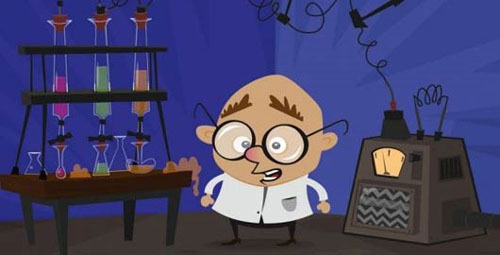 With Adobe Flash, creating cartoons is as accessible as ever. With a little know-how and time, you can jump right in and start animating a cartoon of your very own. However, there's a difference between an animated cartoon and a good animated cartoon. These five tips (listed in no particular order) should help you with planning and animating cartoons.
With Adobe Flash, creating cartoons is as accessible as ever. With a little know-how and time, you can jump right in and start animating a cartoon of your very own. However, there's a difference between an animated cartoon and a good animated cartoon. These five tips (listed in no particular order) should help you with planning and animating cartoons.
- Write a Script. It may seem unnecessary, for the idea of the cartoon might be right in your head, but writing a script can greatly enhance the flow of you movie. Even short movies benefit from scripts. You don't need to go out and purchase expensive screenplay writing software. A simple text editor will do, just as long as you can write down the stage directions and dialogue. If not a script, then at the very least write an outline. This is also helpful if you need to add or change something later on. It's much easier to write it all down then to remember your ideas.
- Get a Graphics Tablet. Drawing with a mouse is hard and not too many people find it very comfortable to do. So, go ahead and buy a graphics tablet, which is basically a digital pad and pen you can draw on.
 You can draw on the screen just like you would a pencil and paper and this can greatly enhance the way your cartoon looks. And in the long run this will be quicker then having to battle the oddities of the mouse. You can find a great variety of graphic tablets (varying in size, price, etc.) on Amazon or in computer stores. Just search around, read customer reviews and find the right one for you.
You can draw on the screen just like you would a pencil and paper and this can greatly enhance the way your cartoon looks. And in the long run this will be quicker then having to battle the oddities of the mouse. You can find a great variety of graphic tablets (varying in size, price, etc.) on Amazon or in computer stores. Just search around, read customer reviews and find the right one for you. - Watch Other Cartoons. If you've never made a cartoon before, watching other peoples' works is a great way to get a handle on flow and style. Now, don't watch a cartoon and steal the ideas or plot from it, but rather watch how the director uses cuts, camera pans, camera zooms and so on. Also pay attention to how the director uses lines (if any), color, special effects, character design and other artistic properties. Find out what appeals to you and what doesn't and then start to adapt it and form your own style
 .
. - Seek Input. You want your cartoon to be your own, but it never hurts to ask for input. You can do this by finding an online community and posting your work there or simply showing your cartoon to your friends. While people you know tend to be biased (and may hold back their thoughts to spare your feelings), it can still help you get an idea of what direction to take your cartoon. Now, don't let input discourage you. There are many people out there who will bash you just for fun. Ignore those hateful comments and focus on the constructive ones.

- Practice! I'm going to be honest, your first cartoon will more than likely not be your greatest work. Like anything, this process takes time and lots of practice. Research never hurt either. The Internet is a vast resource full of articles, examples and video tutorials for you to learn from. Once your first cartoon is in the can, keep going! Start writing scripts for your next cartoons, practice your drawing skills, continue to seek input from others and keep pushing!




No comments:
Post a Comment